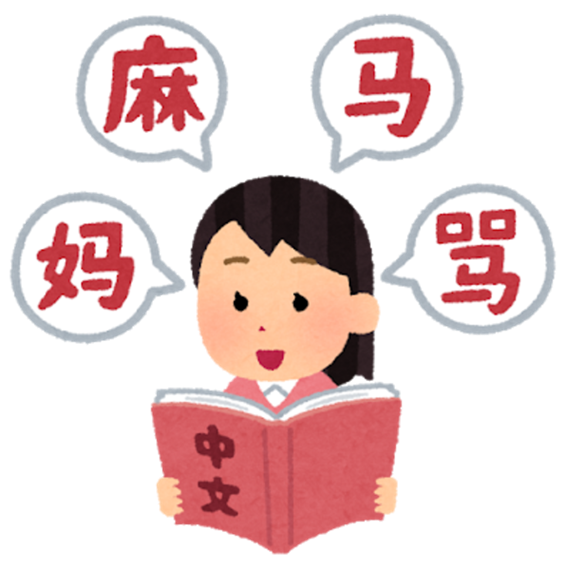Note: This blog post was originally written in Japanese for our Japanese website. We used our machine translation platform Translation Designer to translate it and post-edit the content in English. The original Japanese post can be found here.
Nowadays, Japanese people's English level has improved overall. The fact that you can easily look up technical terms on the internet is helping them as well. As a result, there are more Japanese businesspeople who feel confident at exchanging emails with overseas partners, understanding English reports and presentation materials, and reading business-related documents such as specifications and manuals in English.
If you have business partners not only in English-speaking countries but also in Chinese-speaking countries, wouldn't it be nice if you were able to read Chinese documents? Obviously, business will proceed more smoothly.
You probably have been in one of the following situations when dealing with Chinese documents.
- "I used machine translation but couldn't tell whether it was correctly translated or not."
- "I have a coworker who is a native speaker of Chinese. But I feel bad asking questions since my coworker seems busy."
- "I wasted time while trying to figure out what to do with it."
In this post, we will share some tips on how to read Chinese documents based on English reading skills.
As examples, we will use materials that often appear in work situations, such as work manuals and instruction manuals, and explain our tips by comparing them with English sentences.

Know the basic grammar
In English manuals, an explanation of an action often uses an imperative sentence in which the original form of a verb is used at the beginning of a sentence with no subject. Similarly, an explanation in Chinese often begins with a verb. These imperative sentences are easy to read in documents.
Take a look at the example below. Words in yellow are verbs.
For comparison, we have the English version on the side.
| Simplified Chinese | English |
| 使用以下步骤。 | Use the following steps. |
| 选择F1。 | Select F1. |
| 按下电源开关。 | Press the power switch. |
All of the above sentences start with a verb. The structure of the sentences is the same as the imperative sentences in English. In the case of instruction manuals for devices, similar procedures often appear in a document, and verbs such as 打开 and 选择 are used frequently. That means once you learn the meaning of these verbs, it will be easier to read the document.
In some cases, you will see that a verb or noun is preceded by 请 that means "please" in English. When 请 appears, you can imagine that the instructions are asking you to do something.
| Simplified Chinese | English |
| 请参阅使用说明书。 | Please refer to the instruction manual. |
| 请使用您的密码。 | Please use your password. |
| 请执行以下操作。 | Please perform the following actions. |
Look for breaks between parts of speech
When you look at Chinese text, you'll probably find it hard to know where to separate the words because Chinese characters are written with no spaces in between. And there might be Chinese characters that you have never seen before, which turn out to be just a name. Although it looks complicated, sometimes what is actually written is surprisingly simple and clear. However, it is true that you can't look up the meaning of a word if you don't have a clue as to where to separate the words.

If you know the parts of speech and breaks between them, you can do a search for only the part where you don't understand. Also, you can put that part of a sentence into machine translation. Knowing the breaks between parts of speech makes it much easier to approach Chinese documents. In particular, Chinese nouns and verbs may use characters that are close to Japanese characters. If you know Japanese, in some cases you can guess the meaning without having to look them up.
Where is the break?
Look out for Chinese prepositions called 介詞 to see where the breaks are between words. They are equivalent to English prepositions, such as at, by, for, from, and in.
We gathered the basic Chinese prepositions and their meanings below that frequently appear in manuals.
将
It shows the target of some action. As an adverb, it is used to mean "soon," but when it is used as a preposition, it will be in the form of "将 + noun (object) + verb + other part of speech." It means taking some action on the noun that follows 将.
| Simplified Chinese | English |
| 请将文件保存到您的帐户。 | Please save the file into your account. |
Colloquially, 把 is used interchangeably. This is the so-called bǎ (把) construction that often appears in Chinese grammar textbooks.
与
It means "and" in English. Generally, 和 is used to mean "and," but in written language, 与 may be used instead of 和.
及 and 以及 are also used in the same meaning.
In addition, 或 and 或者 are used as the meaning of "or."
| Simplified Chinese | English |
| 日期与时间 | Date and time |
| 800GB和2TB | 800GB and 2TB |
为
It means "for."
| Simplified Chinese | English |
| 系统会为您自动保存。 | The system will autosave for you. |
However, since 为 also has the meaning of "to be" or "to be regarded as," you should be careful not to misinterpret it.
In the following cases, it corresponds to the meaning of "to be."
| Simplified Chinese | English |
| 将A模式设置为B 。 | Set Mode A to B. |
There are many other prepositions such as 在, 从, 对, 从, and 往. By recognizing these prepositions as markers that indicate breaks in a sentence, you can understand from where to where is a block that consists of a meaning.
Punctuation marks are also useful
When you look at Chinese text, you will notice that there are two types of commas.
| Simplified Chinese | English |
| 手册有日语、英语、法语、西班牙语、德语的版本,请按照本手册中的说明。 | The User Manual is available in Japanese, English, French, Spanish, and Germany, and please refer to the instructions in the manual. |
Here, you see two different commas ( ,and 、) are used in a sentence, but it is premature to think that it is a typo. This is not a mistake. It is properly used considering the meaning.
| , | It shows a break in a sentence like the Japanese comma. |
| 、 | It shows parallel structure, which is a structure that consists of the same part of speech or form in a parallel state. In the sentence above, it is used to illustrate a concrete example. |
Not only a period ( 。) but also commas ( ,and 、) are useful for knowing where the sentence breaks. Knowing that this comma ( 、) indicates parallel structure makes it easier to determine how far the parallel continues. In English, by finding a parallel structure, you can understand the structure of a sentence. For example, if gerunds continue to a certain point or a same preposition is continually used, you can determine which part is a parallel structure. Same in Chinese, this comma ( 、) can be one of the judgment factors.
Summary
We shared some easy tips for reading Chinese documents using examples from manuals.
But of course, if you want to understand the exact meaning, we recommend that you ask for document translation services and get it professionally translated. We hope that this post will be a stepping-stone for those who are completely new to Chinese to get a rough idea of what is written in Chinese documents. Also, it might give you some hints to determine which parts to machine translate on your own.
Kawamura's translation services
Kawamura International has a local office in Hong Kong and a group company in Europe. With these networks, Kawamura has built strong cooperative relationships with local linguists and localization partners throughout the years. We support over 40 languages and provide professional translation services in all languages. Feel free to reach out to us if you have any questions about Chinese document translation services or multilingual translation support for localization projects.
_CMYK_OL.png)

